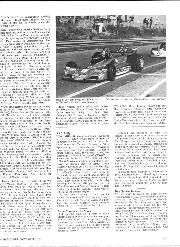
International news
RAC Rally November’s premier motor sporting event is the RAC Rally, which starts in Bath on Saturday, November 27th, and finishes at the same venue on Tuesday, November 30th. Sponsorship…
‘I’ lir lE IkK 10 EN CA 011/VANT E o1
THE sports-car enthusiast differs from the utility car owner in as much as whereas the former individual likes to maintain his car in very line fettle, the latter either does not care a jot about the mechanical health of his vehicle, or, if he does, counts on the service station to maintain it. We recently saw a demonstration of a device of immediate interest to sports-car owners, whose engines are in good order and whose concern is to keep them so. We came upon this demonstration quite by chance ; we were not recipients of a special Press invitation. What we saw was a small electric motor pumping filthy oil into a cleansing element, in shape like a big filter or air-cleaner, which was heated to normal sump temperature. After a short while the oil leaving the cleaner came away golden in colour and samples showed no trace of containing carbon Or sludge, and the cleansed oil felt more ” oily ” than the sump drainings passing into the cleaner. The makers of this Cleaner maintain that water, acid, carbon and sludge are removed by a chemical process and that the oil becomes better than new. When applied to a car engine a by-pass is used and the whole sump contents treated by degrees. If the engine clearances are as they should be a considerable saving in oil must result, as it is never necessary to drain the sump, merely to top it up. We were shown the oil from the sump of the demonstrator’s own late-type A.C. saloon, which he said had run tens of thousands of miles without change of oil, and the whole of the lubricant on the dip-stick came away pure golden in line and thin in consistency. The process used was well known during the war and industrially. We questioned whether temperature would not in time lower the quality of an oil, but were told that the heating experienced in a normal i.e. engine is insufficient to do any harm. We believe this is not altogether true, and that continual heating to a temperature of over 140°F. will hasten oxidisation —and the purifier under review can do everything except offset the effect of oxidisation. On the other hand, the fact that provision is made for cooling the Sump oil in any given engine must not be taken as an indication that the engine tends to destroy its oil by overheating, more often the designer .seeks to keep the lubricant at a low
temperature to Make it act as a cooling medium and to make use of its full viscosity. We could not agree that more awards might be won in trials by using this purifier, but certainly it would seem a most vain al e(mmonent for maintaining sports-car engines in good order, reducing risk of bearing failure and sribstan tially lowering the oil-bill. For longdistance racing and record breaking it would appear a valuable fitment, not so much from the viewpoint of maintaining the oil in condition to permit full power output, as to keep it in the state that would obviate undue wear and any tendency to bearing failure, which might otherwise be experienced towards the end of such a run—for oil may be Said to lose valuable properties after about 500 to 1,000 miles in the ordinary lubricating system, whereas a 24-hour record can involve sonic very fast miles with no time to drain the
engine. This purifier naturally has a wide application in the commercial field. It requires no mechanical additions to an engine and in car size costs /4/15/0. We will gladly forward any inquiries to the makers or agents.